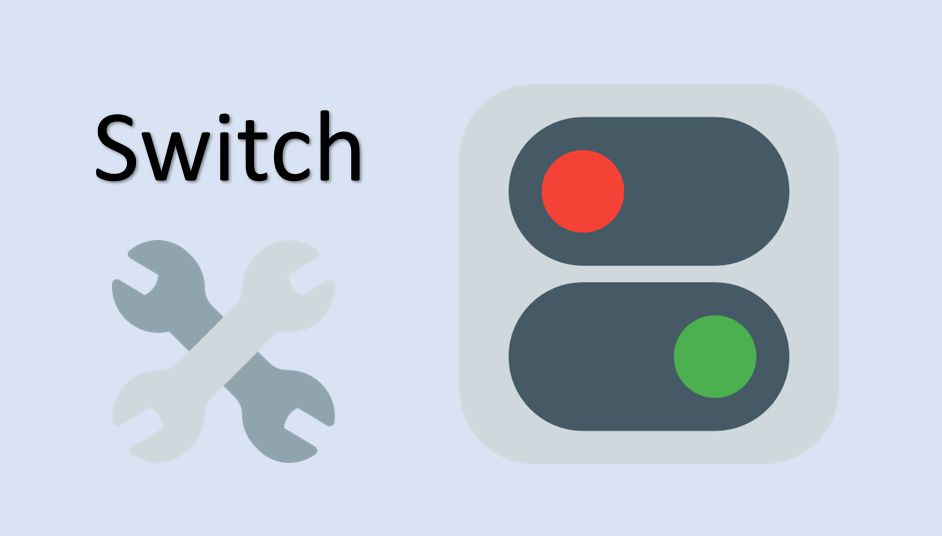前提
前置文章:
在前置的《基于Netty和SpringBoot实现一个轻量级RPC框架-协议篇》一文中已经定义了一个相对简单的RPC私有协议,并且实现了对应的编码和解码模块。这篇文章基于协议篇,完成Server端代码调用的编写。考虑到目前相对主流的IOC容器是Spring,这里选用了spring-boot-starter(非MVC容器,只是单纯管理Bean),依赖JDK1.8+。
思路
首先RPC私有协议定义了Client端会传过来四个和服务调用息息相关的字段:接口全类名interfaceName、方法名methodName、方法参数签名字符串数组methodArgumentSignatures(可选,这个参数不是必须传入的)以及方法参数数组methodArguments(可选,空方法列表的时候不需要传入参数)。主要流程如下:
- 把
Server端的所有服务端(实现)类交由IOC容器托管。
Client端发起RPC请求。- 通过前面提到的最多四个参数,从
Server服务实例的IOC容器中匹配出吻合度最高的一个方法java.lang.reflect.Method实例、该方法实例的宿主类以及宿主类对应的Bean实例,如果这一步匹配的目标方法超过1个或者为0个,可以直接返回异常信息。
- 把前一步得到的
Method实例、宿主类Bean实例,结合方法参数数组methodArguments进行反射调用,得到调用结果。
Server端把响应结果封装到payload通过私有协议发送回Client端。
Server端代码实现
为了暂时方便起见,部分数组入参被重新封装为ArrayList,实际上编写RPC框架的时候应该优先考虑性能问题,像JDK提供的集合类库等等应该尽可能少用(以ArrayList为例,扩容的时候存在底层Object[]拷贝,造成性能损失和额外的内存消耗),极尽可能使用基本类型和数组。
先定义方法匹配器MethodMatcher相关的类:
public interface MethodMatcher {
MethodMatchOutput selectOneBestMatchMethod(MethodMatchInput input);
}
@EqualsAndHashCode
@Data
public class MethodMatchInput {
private String interfaceName;
private String methodName;
private List<String> methodArgumentSignatures;
private int methodArgumentArraySize;
}
@Data
public class MethodMatchOutput {
private Method targetMethod;
private Class<?> targetClass;
private Class<?> targetUserClass;
private Object target;
private List<Class<?>> parameterTypes;
}
|
目标方法匹配的逻辑大致如下:
- 方法名称和方法实例的宿主类型一定作为匹配条件的一部分。
- 如果传入了参数签名列表,优先使用参数签名列表类型进行匹配。
- 如果没有传入参数签名列表,那么使用参数的数量进行匹配。
- 如果参数签名列表和参数列表都没有传入,那么只能通过方法名称和方法实例的宿主类型匹配。
- 考虑到方法匹配解析的过程相对耗时,需要把结果缓存起来。
分析至此,可以基于反射,编写一个抽象的方法匹配器BaseMethodMatcher,然后把获取宿主类信息的功能委托到子类:
public class MethodMatchException extends RuntimeException {
public MethodMatchException(String message) {
super(message);
}
public MethodMatchException(String message, Throwable cause) {
super(message, cause);
}
public MethodMatchException(Throwable cause) {
super(cause);
}
}
@Data
public class HostClassMethodInfo {
private Class<?> hostClass;
private Class<?> hostUserClass;
private Object hostTarget;
}
@Slf4j
abstract class BaseMethodMatcher implements MethodMatcher {
private final ConcurrentMap<MethodMatchInput, MethodMatchOutput> cache = Maps.newConcurrentMap();
@Override
public MethodMatchOutput selectOneBestMatchMethod(MethodMatchInput input) {
return cache.computeIfAbsent(input, in -> {
try {
MethodMatchOutput output = new MethodMatchOutput();
Class<?> interfaceClass = Class.forName(in.getInterfaceName());
HostClassMethodInfo info = findHostClassMethodInfo(interfaceClass);
List<Method> targetMethods = Lists.newArrayList();
ReflectionUtils.doWithMethods(info.getHostUserClass(), targetMethods::add, method -> {
String methodName = method.getName();
Class<?> declaringClass = method.getDeclaringClass();
List<Class<?>> inputParameterTypes = Optional.ofNullable(in.getMethodArgumentSignatures())
.map(mas -> {
List<Class<?>> list = Lists.newArrayList();
mas.forEach(ma -> list.add(ClassUtils.resolveClassName(ma, null)));
return list;
}).orElse(Lists.newArrayList());
output.setParameterTypes(inputParameterTypes);
if (!inputParameterTypes.isEmpty()) {
List<Class<?>> parameterTypes = Lists.newArrayList(method.getParameterTypes());
return Objects.equals(methodName, in.getMethodName()) &&
Objects.equals(info.getHostUserClass(), declaringClass) &&
Objects.equals(parameterTypes, inputParameterTypes);
}
if (in.getMethodArgumentArraySize() > 0) {
List<Class<?>> parameterTypes = Lists.newArrayList(method.getParameterTypes());
return Objects.equals(methodName, in.getMethodName()) &&
Objects.equals(info.getHostUserClass(), declaringClass) &&
in.getMethodArgumentArraySize() == parameterTypes.size();
}
return Objects.equals(methodName, in.getMethodName()) &&
Objects.equals(info.getHostUserClass(), declaringClass);
});
if (targetMethods.size() != 1) {
throw new MethodMatchException(String.format("查找到目标方法数量不等于1,interface:%s,method:%s",
in.getInterfaceName(), in.getMethodName()));
}
Method targetMethod = targetMethods.get(0);
output.setTargetClass(info.getHostClass());
output.setTargetMethod(targetMethod);
output.setTargetUserClass(info.getHostUserClass());
output.setTarget(info.getHostTarget());
return output;
} catch (Exception e) {
log.error("查找匹配度最高的方法失败,输入参数:{}", JSON.toJSONString(in), e);
if (e instanceof MethodMatchException) {
throw (MethodMatchException) e;
} else {
throw new MethodMatchException(e);
}
}
});
}
abstract HostClassMethodInfo findHostClassMethodInfo(Class<?> interfaceClass);
}
|
接着,通过接口类型获取宿主类的功能就委托给Spring实现,从IOC容器中获取,定义SpringMethodMatcher:
@Component
public class SpringMethodMatcher extends BaseMethodMatcher implements BeanFactoryAware {
private DefaultListableBeanFactory beanFactory;
@Override
public void setBeanFactory(@NonNull BeanFactory beanFactory) throws BeansException {
this.beanFactory = (DefaultListableBeanFactory) beanFactory;
}
@Override
HostClassMethodInfo findHostClassMethodInfo(Class<?> interfaceClass) {
HostClassMethodInfo info = new HostClassMethodInfo();
Object bean = beanFactory.getBean(interfaceClass);
info.setHostTarget(bean);
info.setHostClass(bean.getClass());
info.setHostUserClass(ClassUtils.getUserClass(bean.getClass()));
return info;
}
}
|
至此,目标方法匹配的模块已经编写完毕,接下来需要处理方法参数列表的反序列化。编写协议的时候,笔者把方法参数列表methodArguments存放在Object数组中,传输的时候序列化为byte数组,经过协议解析之后,方法参数列表的实际类型为ByteBuf数组(这是因为Netty中的字节容器就是ByteBuf),那么需要考虑把ByteBuf数组转换为目标方法的参数类型实例。主要步骤如下:
- 如果方法参数列表为空,那么什么都不用做,也就是调用了无参数的方法。
- 如果方法参数列表不为空同时方法参数类型列表不为空,优先选用方法参数类型列表进行转换。
- 如果方法参数列表不为空同时方法参数类型列表为空,则使用
Method#getParameterTypes()得到的方法参数列表类型进行转换。
定义一个方法参数转换器接口MethodArgumentConverter:
public interface MethodArgumentConverter {
ArgumentConvertOutput convert(ArgumentConvertInput input);
}
@Data
public class ArgumentConvertInput {
private Method method;
private List<Class<?>> parameterTypes;
private List<Object> arguments;
}
@Data
public class ArgumentConvertOutput {
private Object[] arguments;
}
|
方法参数转换器的默认实现如下:
@Slf4j
@Component
public class DefaultMethodArgumentConverter implements MethodArgumentConverter {
private final Serializer serializer = FastJsonSerializer.X;
@Override
public ArgumentConvertOutput convert(ArgumentConvertInput input) {
ArgumentConvertOutput output = new ArgumentConvertOutput();
try {
if (null == input.getArguments() || input.getArguments().isEmpty()) {
output.setArguments(new Object[0]);
return output;
}
List<Class<?>> inputParameterTypes = input.getParameterTypes();
int size = inputParameterTypes.size();
if (size > 0) {
Object[] arguments = new Object[size];
for (int i = 0; i < size; i++) {
ByteBuf byteBuf = (ByteBuf) input.getArguments().get(i);
int readableBytes = byteBuf.readableBytes();
byte[] bytes = new byte[readableBytes];
byteBuf.readBytes(bytes);
arguments[i] = serializer.decode(bytes, inputParameterTypes.get(i));
byteBuf.release();
}
output.setArguments(arguments);
return output;
}
Class<?>[] parameterTypes = input.getMethod().getParameterTypes();
int len = parameterTypes.length;
Object[] arguments = new Object[len];
for (int i = 0; i < len; i++) {
ByteBuf byteBuf = (ByteBuf) input.getArguments().get(i);
int readableBytes = byteBuf.readableBytes();
byte[] bytes = new byte[readableBytes];
byteBuf.readBytes(bytes);
arguments[i] = serializer.decode(bytes, parameterTypes[i]);
byteBuf.release();
}
output.setArguments(arguments);
return output;
} catch (Exception e) {
throw new ArgumentConvertException(e);
}
}
}
|
所有前置工作都完成了,现在编写一个Server端的入站处理器ServerHandler,暂时不做代码逻辑优化,只做实现,把反射调用的模块直接在此类中编写:
@Component
@Slf4j
public class ServerHandler extends SimpleChannelInboundHandler<RequestMessagePacket> {
@Autowired
private MethodMatcher methodMatcher;
@Autowired
private MethodArgumentConverter methodArgumentConverter;
@Override
protected void channelRead0(ChannelHandlerContext ctx, RequestMessagePacket packet) throws Exception {
log.info("服务端接收到:{}", packet);
MethodMatchInput input = new MethodMatchInput();
input.setInterfaceName(packet.getInterfaceName());
input.setMethodArgumentSignatures(Optional.ofNullable(packet.getMethodArgumentSignatures())
.map(Lists::newArrayList).orElse(Lists.newArrayList()));
input.setMethodName(packet.getMethodName());
Object[] methodArguments = packet.getMethodArguments();
input.setMethodArgumentArraySize(null != methodArguments ? methodArguments.length : 0);
MethodMatchOutput output = methodMatcher.selectOneBestMatchMethod(input);
log.info("查找目标实现方法成功,目标类:{},宿主类:{},宿主方法:{}",
output.getTargetClass().getCanonicalName(),
output.getTargetUserClass().getCanonicalName(),
output.getTargetMethod().getName()
);
Method targetMethod = output.getTargetMethod();
ArgumentConvertInput convertInput = new ArgumentConvertInput();
convertInput.setArguments(input.getMethodArgumentArraySize() > 0 ? Lists.newArrayList(methodArguments) : Lists.newArrayList());
convertInput.setMethod(output.getTargetMethod());
convertInput.setParameterTypes(output.getParameterTypes());
ArgumentConvertOutput convertOutput = methodArgumentConverter.convert(convertInput);
ReflectionUtils.makeAccessible(targetMethod);
Object result = targetMethod.invoke(output.getTarget(), convertOutput.getArguments());
ResponseMessagePacket response = new ResponseMessagePacket();
response.setMagicNumber(packet.getMagicNumber());
response.setVersion(packet.getVersion());
response.setSerialNumber(packet.getSerialNumber());
response.setAttachments(packet.getAttachments());
response.setMessageType(MessageType.RESPONSE);
response.setErrorCode(200L);
response.setMessage("Success");
response.setPayload(JSON.toJSONString(result));
log.info("服务端输出:{}", JSON.toJSONString(response));
ctx.writeAndFlush(response);
}
}
|
编写一个Server的启动类ServerApplication,在Spring容器启动之后,启动Netty服务:
@SpringBootApplication(scanBasePackages = "club.throwable.server")
@Slf4j
public class ServerApplication implements CommandLineRunner {
@Value("${netty.port:9092}")
private Integer nettyPort;
@Autowired
private ServerHandler serverHandler;
public static void main(String[] args) throws Exception {
SpringApplication.run(ServerApplication.class, args);
}
@Override
public void run(String... args) throws Exception {
int port = nettyPort;
ServerBootstrap bootstrap = new ServerBootstrap();
EventLoopGroup bossGroup = new NioEventLoopGroup();
EventLoopGroup workerGroup = new NioEventLoopGroup();
try {
bootstrap.group(bossGroup, workerGroup)
.channel(NioServerSocketChannel.class)
.childHandler(new ChannelInitializer<SocketChannel>() {
@Override
protected void initChannel(SocketChannel ch) throws Exception {
ch.pipeline().addLast(new LengthFieldBasedFrameDecoder(1024, 0, 4, 0, 4));
ch.pipeline().addLast(new LengthFieldPrepender(4));
ch.pipeline().addLast(new RequestMessagePacketDecoder());
ch.pipeline().addLast(new ResponseMessagePacketEncoder(FastJsonSerializer.X));
ch.pipeline().addLast(serverHandler);
}
});
ChannelFuture future = bootstrap.bind(port).sync();
log.info("启动NettyServer[{}]成功...", port);
future.channel().closeFuture().sync();
} finally {
workerGroup.shutdownGracefully();
bossGroup.shutdownGracefully();
}
}
}
|
最后,编写契约包和契约实现:
- ch0-custom-rpc-protocol 项目根目录
- club.throwable
- utils 工具类
- protocol 协议
- exception 异常
- contract 契约
- HelloService 契约接口
- server 服务端
- contract
- DefaultHelloService 契约接口实现
|
public interface HelloService {
String sayHello(String name);
}
@Service
public class DefaultHelloService implements HelloService {
@Override
public String sayHello(String name) {
return String.format("%s say hello!", name);
}
}
|
先启动服务端ServerApplication,再启动上一节提到的TestProtocolClient,输出结果:
// 服务端日志
2020-01-15 00:05:57.898 INFO 14420 --- [ main] club.throwable.server.ServerApplication : 启动NettyServer[9092]成功...
2020-01-15 00:06:05.980 INFO 14420 --- [ntLoopGroup-3-1] club.throwable.server.ServerHandler : 服务端接收到:RequestMessagePacket(interfaceName=club.throwable.contract.HelloService, methodName=sayHello, methodArgumentSignatures=[java.lang.String], methodArguments=[PooledUnsafeDirectByteBuf(ridx: 0, widx: 6, cap: 6/139)])
2020-01-15 00:06:07.448 INFO 14420 --- [ntLoopGroup-3-1] club.throwable.server.ServerHandler : 查找目标实现方法成功,目标类:club.throwable.server.contract.DefaultHelloService,宿主类:club.throwable.server.contract.DefaultHelloService,宿主方法:sayHello
2020-01-15 00:06:07.521 INFO 14420 --- [ntLoopGroup-3-1] club.throwable.server.ServerHandler : 服务端输出:{"attachments":{},"errorCode":200,"magicNumber":10086,"message":"Success","messageType":"RESPONSE","payload":"\"doge say hello!\"","serialNumber":"65f01b8e89bb479b8a36a60bd6519617","version":1}
// 客户端日志
00:06:05.891 [main] INFO club.throwable.protocol.TestProtocolClient - 启动NettyClient[9092]成功...
...省略...
00:06:13.197 [nioEventLoopGroup-2-1] INFO club.throwable.protocol.TestProtocolClient - 接收到来自服务端的响应消息,消息内容:{"attachments":{},"errorCode":200,"magicNumber":10086,"message":"Success","messageType":"RESPONSE","payload":"\"doge say hello!\"","serialNumber":"65f01b8e89bb479b8a36a60bd6519617","version":1}
|
可见RPC调用成功。
小结
编写RPC的Server端技巧在于处理目标方法和宿主类的查找,在转换方法参数的时候,需要考虑简化处理和提高效率,剩下的就是做好异常处理和模块封装。限于篇幅,后面会先分析Client端的处理,再分析心跳处理、服务端优化、甚至是对接注册中心等等,在Netty、SpringBoot等优秀框架的加持下编写一个RPC框架其实并不困难,困难的是性能优化和生态圈的支持。
Demo项目地址:
(本文完 c-1-d e-a-20200115)











